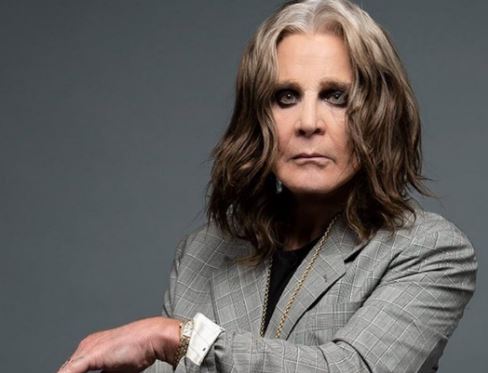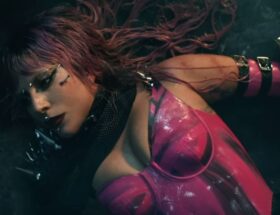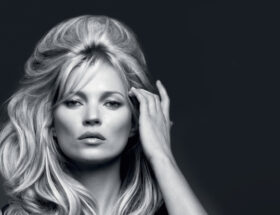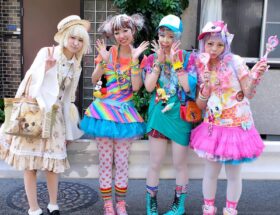Introduction
Heavy metal, a genre of music known for its thunderous sound, intricate guitar solos, and intense vocal performances, extends beyond its sonic boundaries to encompass a distinctive and often rebellious fashion aesthetic. In this 2000-word article, we will dive deep into the world of heavy metal fashion aesthetics, exploring its origins, evolution, key elements, and the impact it has had on both the music industry and the broader realm of fashion.
Part 1: The Origins of Heavy Metal Fashion
The roots of heavy metal fashion can be traced back to the late 1960s and early 1970s when the genre was in its formative stages. Bands like Black Sabbath, Led Zeppelin, and Deep Purple laid the groundwork for not only the music but also the fashion that would come to define heavy metal.
1. The Psychedelic Era
Before evolving into the distinct style we know today, early heavy metal fashion drew influences from the psychedelic era. Bands experimented with colorful clothing, flowing garments, and a sense of freedom that reflected the countercultural movements of the time.
2. The Birth of Leather and Denim
Leather and denim emerged as iconic materials that would become synonymous with heavy metal fashion. Bands like Judas Priest and Motörhead popularized leather jackets, studs, and patches, giving rise to the biker aesthetic that continues to influence heavy metal fashion.
3. The Glam and Glitter Influence
During the 1970s, glam rock had a significant impact on heavy metal fashion. Bands like T. Rex and David Bowie introduced androgynous, flamboyant looks characterized by platform boots, glittery makeup, and extravagant hairstyles. This influence can still be seen in some branches of heavy metal, particularly in bands like Twisted Sister and Mötley Crüe.
Part 2: Key Elements of Heavy Metal Fashion
Heavy metal fashion is a diverse and multifaceted aesthetic that encompasses various subgenres and styles. While it’s impossible to distill it into a single definition, several key elements are prevalent in the world of heavy metal fashion:
1. Black as a Dominant Color
Black is the quintessential color in heavy metal fashion. It symbolizes the genre’s darkness, intensity, and rebellion. Many musicians and fans opt for all-black attire, from leather jackets to band t-shirts and skinny jeans.
2. Leather and Denim
As mentioned earlier, leather and denim play a central role in heavy metal fashion. Leather jackets adorned with patches, studs, and spikes are staples. Denim vests, often referred to as “battle jackets,” serve as canvases for customizing with band patches and artwork.
3. Band Merchandise
Wearing band merchandise is a way for fans to express their allegiance to their favorite heavy metal bands. Concert t-shirts, hoodies, and accessories featuring band logos and artwork are highly sought after and proudly displayed by enthusiasts.
4. Metalhead Accessories
Accessories in heavy metal fashion can be quite distinctive. These include studded belts, leather wristbands, bullet belts, chains, and, of course, metal jewelry like skull rings and necklaces.
5. Dark Makeup and Hairstyles
Dark and dramatic makeup, including smoky eyes and bold lipstick, is common among heavy metal musicians and fans. Hairstyles range from long, flowing locks to wild and untamed looks, often dyed in various shades of black, red, or vibrant colors.
6. Bandanas and Headgear
Bandanas, often worn as headbands, are a popular accessory, particularly in subgenres like thrash metal and punk-influenced metal. They add a rugged and rebellious edge to the overall look.
Part 3: The Evolution of Heavy Metal Fashion
Heavy metal fashion has evolved significantly since its inception, adapting to changing musical styles and cultural shifts. Here are some notable periods and developments in the evolution of heavy metal fashion:
1. The New Wave of British Heavy Metal (NWOBHM)
The NWOBHM movement of the late 1970s and early 1980s saw the emergence of bands like Iron Maiden and Judas Priest, which introduced a more theatrical and visually striking aspect to heavy metal fashion. Elaborate stage costumes and album artwork became essential components of the genre.
2. The Rise of Extreme Subgenres
With the advent of extreme subgenres like black metal and death metal in the 1980s and 1990s, heavy metal fashion took a darker and more sinister turn. Corpse paint, spiked gauntlets, and elaborate leather and metal accessories became defining elements of these subcultures.
3. Nu-Metal and Alternative Influences
In the late 1990s and early 2000s, nu-metal bands like Korn and Slipknot brought a more alternative and industrial edge to heavy metal fashion. Baggy pants, distressed clothing, and a blend of metal, hip-hop, and punk aesthetics marked this period.
4. The Return of Retro Styles
In recent years, there has been a resurgence of interest in the classic heavy metal fashion of the 1980s. Vintage band t-shirts, denim vests, and leather jackets have made a comeback, reflecting a sense of nostalgia among fans and musicians.
Part 4: Heavy Metal Fashion Icons
Throughout the history of heavy metal, certain musicians have become fashion icons, known for their unique and influential styles:
1. Ozzy Osbourne: The Prince of Darkness is known for his distinctive gothic look, featuring leather and studs, round sunglasses, and a wild mane of hair.
2. Rob Halford: The frontman of Judas Priest, known as the “Metal God,” is a leather-clad icon who has influenced countless fans and musicians.
3. Lemmy Kilmister: The late frontman of Motörhead was synonymous with his biker-style fashion, complete with his signature black cowboy hat and mutton chops.
4. King Diamond: The Danish metal legend is instantly recognizable by his face paint, top hat, and elaborate stage attire, which embodies the essence of theatrical heavy metal.
5. Doro Pesch: As one of the few female icons in heavy metal, Doro Pesch is celebrated for her leather-clad, rock ‘n’ roll style and powerful stage presence.
Part 5: The Impact of Heavy Metal Fashion
Heavy metal fashion extends its influence beyond the stage and music videos, impacting the broader fashion industry and popular culture in several ways:
1. Runway Influence: Designers have drawn inspiration from heavy metal fashion, incorporating elements like leather, studs, and dark aesthetics into their collections. Brands like Balmain and Versace have embraced the edginess of heavy metal fashion.
2. Street Style: Elements of heavy metal fashion have found their way into street style, with studded accessories, band t-shirts, and leather jackets becoming mainstream fashion staples.
3. Subcultural Identity: Heavy metal fashion serves as a form of subcultural identity for fans, allowing them to express their affiliation with the genre and its values of individuality and rebellion.
4. Artistic Expression: Heavy metal fashion is a means of artistic expression, enabling musicians and fans alike to visually communicate the music’s intensity, themes, and ethos.
Conclusion
The fashion aesthetics of heavy metal are a testament to the genre’s enduring influence and ability to captivate audiences not only through music but also through style and rebellion. From its origins in the 1970s to its ever-evolving subgenres and iconic fashion moments, heavy metal fashion continues to push boundaries, challenge norms, and inspire a sense of individuality and authenticity. In the world of heavy metal, fashion is not just about what you wear; it’s a statement of who you are and what you stand for in the realm of unapologetic, high-octane rock ‘n’ roll.









